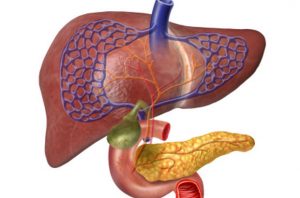 New treatment for non-alcoholic fatty liver disease (NAFLD) has been uncovered in a study. The researchers found a new pathway in the liver, shedding light on a new potential means of treating NAFLD.
New treatment for non-alcoholic fatty liver disease (NAFLD) has been uncovered in a study. The researchers found a new pathway in the liver, shedding light on a new potential means of treating NAFLD.
The researchers found that a protein TRPV4, part of the defense system of the body, can activate the release of nitric oxide. Why is this significant? Nitric oxide blocks the enzyme CYP2E1 that largely contributes to the progress of NAFLD. The protein TRPV4 has previously been found to help protect against cardiovascular disease.
Advertisement
With this new discovery, the next step is to try harnessing TRPV4’s abilities in preventing and treating the liver disease.
Research lead Saurabh Chatterjee explained, “There are currently no clinically proven drugs to treat non-alcoholic fatty liver disease. Our goal is to find novel pathways in the liver that will result in a road to a cure, and this novel internal defense mechanism within the liver offers a very promising route.”
Wolfgang Liedtke, who first described TRPV4 16 years ago, added, “This means that one has to be careful when aiming to inhibit TRPV4 for therapeutic purposes, such as when treating pain, inflammation, or itching, or other conditions, in particular when inhibiting TRPV4 by systemic application of TRPV4-blockers. An attractive avenue to meet this therapeutic dilemma is to use herbal-derived TRPV4-activating compounds that might be more ‘gentle’ or targeted genetic manipulations of liver cells aiming to facilitate TRPV4-signaling in the liver when treating non-alcoholic fatty liver disease.
These methods could also be a suitable approach to balance an eventually-needed systemic inhibition of TRPV4 that one aims for in order to treat pain, inflammation, fibrotic diseases, or lung edema, in order to avoid additional damage to the liver.”
The findings have potentially groundbreaking implications in the prevention and treatment of NAFLD. Collaborator Prakash Nagarkatti added, “This type of research, which seeks novel pathways for treatment of diseases for which there are currently no therapeutic options is vitally important. It opens doors that lead to the breakthroughs patients rely on to improve outcomes, enhance quality of life and even save lives.”
NAFLD is characterized by the buildup of fat in the liver, along with inflammation that is not a result of alcohol. The condition is most commonly seen in overweight or obese individuals, type 2 diabetics, and in those with high cholesterol and triglycerides. Still, some patients will develop NAFLD without having any common risk factors.
